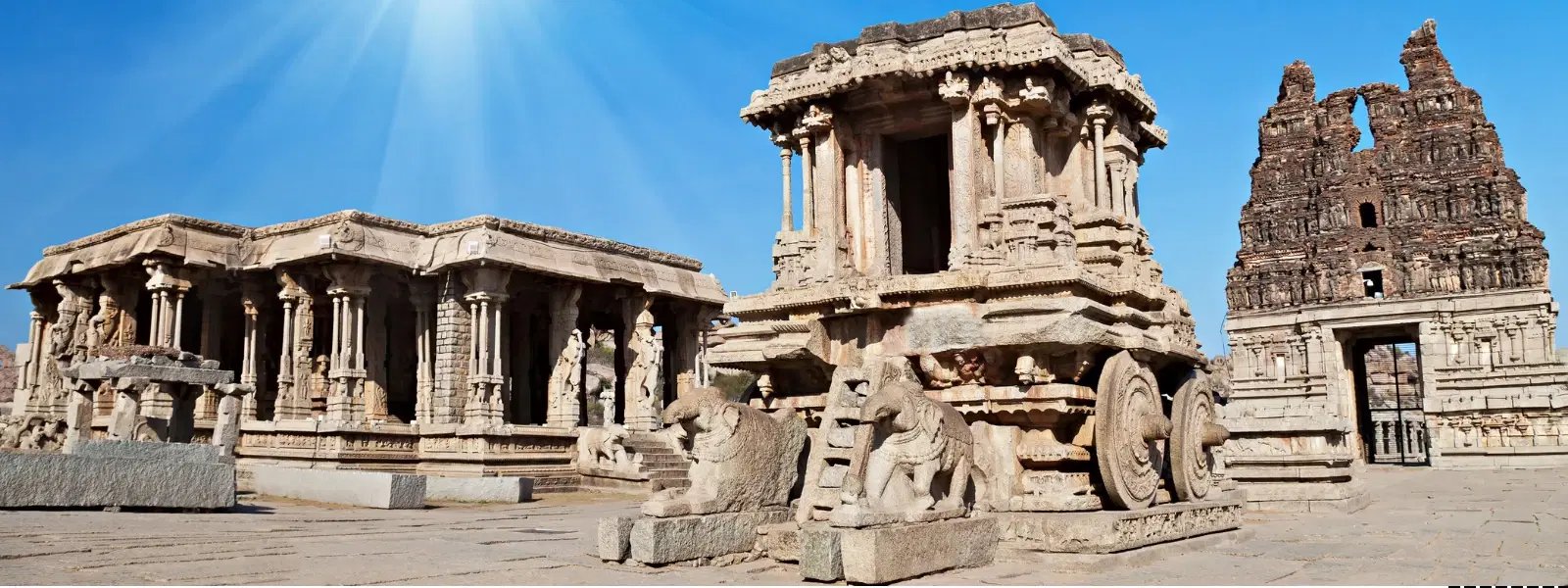
Flights
•04 min read

India, a land of diverse cultures and histories, amazes travelers with its captivating UNESCO World Heritage Sites. From bustling cities to serene natural landscapes, the world heritage sites list in India attests to the country’s architectural brilliance and cultural legacy. Imagine exploring iconic landmarks with the confidence that every aspect of your journey—from effortless booking to exclusive rewards—is taken care of by Tata Neu, inviting you to experience travel that enriches both heart and soul. Discover these iconic landmarks and learn why they continue to draw visitors from across the globe.
UNESCO World Heritage Sites are landmarks recognized for their cultural, natural, or mixed significance. India has been a proud participant in this global initiative since 1972, according to official UNESCO records. These locations are celebrated not only for their historical and cultural value but also for their contributions to global heritage. From monuments that echo with the whispers of the past to pristine natural landscapes, each site has a story to tell.
India is home to 40 UNESCO World Heritage Sites as of 2024, according to recent UNESCO data. This diverse collection includes ancient architectural marvels and breathtaking natural wonders. Each site, whether a cultural treasure or a natural paradise, underlines the vastness and uniqueness of India’s heritage.
Among the famous heritage places in India, the Taj Mahal, Red Fort, and Hampi stand out as beacons of beauty and history. These sites invite travelers to experience intricate artistry and timeless legends. Their detailed carvings and majestic designs not only tell tales of bygone eras but also inspire awe and wonder in every visitor.
The journey of discovery continues with Assam's Moidams (Mound-Burial System of the Ahom Dynasty), the latest addition to India’s UNESCO list in 2024. This cultural landmark enriches our understanding of the country’s ancient rituals and society. Its inscription is a tribute to the innovative spirit and rich traditions of the region.
The Archaeological Survey of India (ASI) plays a pivotal role in protecting these timeless jewels. From the towering Qutub Minar to the exquisite Sun Temple in Konark, dedicated efforts ensure that these protected monuments in India are preserved for generations to come. Each carefully maintained site is a window into India’s storied past.

India’s natural heritage is as significant as its cultural landmarks. Natural sites such as Kaziranga National Park and the Western Ghats represent the ecological wealth and biodiversity of the region. These popular heritage sites in India offer visitors an escape into a world of lush greenery, rare wildlife, and untouched beauty.
Mixed heritage sites like Khangchendzonga National Park exemplify the perfect balance between nature and culture. Here, the raw splendor of natural landscapes blends seamlessly with cultural narratives, presenting a comprehensive view of India’s rich legacy.
India’s world cultural heritage sites have a profound impact on global understanding. They are not merely relics of a bygone era but living symbols of historical progress and cultural evolution. This profound legacy helps shape the global narrative, underscoring the importance of art, history, and nature in building a shared future.
The draw of these landmarks is undeniable. Tourists visiting these extraordinary sites contribute to local economies through cultural tourism. From the iconic Taj Mahal to lesser-known archaeological treasures, each visit supports local artisans, guides, and communities, ensuring that the past continues to benefit the present.
Whether you're drawn to the architectural marvel of the Taj Mahal or the rugged beauty of natural retreats like Kaziranga National Park, there is something for every traveler. Explore Jaipur’s vibrant history, witness the ancient artistry of Hampi, or marvel at the intricate carvings at the Ajanta Caves. Each of these must-visit heritage locations in India is unique, perfect for those who are passionate about history and culture.
When exploring these ancient sites in India, planning ahead can make all the difference. Consider the best times to visit, be aware of local customs, and embrace the rich narratives of each destination. For those planning longer journeys, Tata Neu provides a seamless booking experience across flights and hotels. With reliable services from Air India and Air India Express, every journey can be as comfortable as it is inspiring. Additionally, safeguard your journey with Tata Neu’s flexible trip insurance options such as FlyCan and FlyNxt (*T&C apply), ensuring your plans are protected against delays or changes. Plus, earn NeuCoins on all bookings (1 NeuCoin = 1₹ saving), adding extra value to your travel experience.
Did You Know?
India is home to 40 UNESCO World Heritage Sites, making it one of the top countries globally for cultural and natural treasures. The Taj Mahal, often counted among the world’s wonders, was India’s first site to be inscribed and continues to captivate millions with its timeless allure.
India has 40 UNESCO World Heritage Sites as of 2024, spanning cultural, natural, and mixed categories.
The 40th site is Dholavira, an archaeological marvel from the Harappan civilization, added in 2021.
The 41st site is the Moidams (Mound-Burial System) of the Ahom Dynasty in Assam, recognized in 2024.
Notable sites include the Taj Mahal, Jaipur City, Hampi, Kaziranga National Park, and the Ajanta Caves.
Maharashtra leads with five UNESCO World Heritage Sites, including the Ajanta and Ellora Caves.
In conclusion, India's UNESCO World Heritage Sites are more than just monuments; they are living testaments to the country’s remarkable past and vibrant present. Each site, whether an architectural wonder or a natural sanctuary, offers a unique story that reflects the heart and soul of India. For the wanderer, the planner, the professional, and the luxury seeker alike, these landmarks provide an opportunity to connect with history, experience culture, and enjoy the finer things in life. Plan your journey with Tata Neu to experience these treasures first-hand with a seamless travel experience, where every booking adds to not only your memories but also rewards via NeuCoins (1 NeuCoin = 1₹ saving).